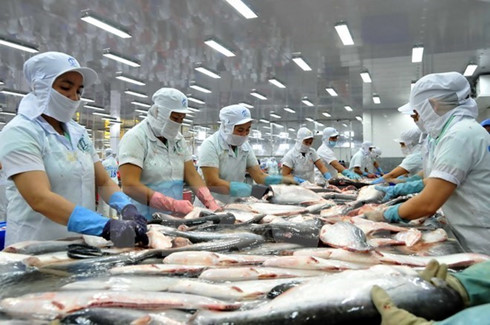Tra fish sector should target Asian market: experts
- Vietnamese expert says protein can used to kill tumors in cancer patients
- Elephants shouldn’t slave for tourists in Vietnam: experts
- Rosy 2017 VN economic outlook: experts
According to the Vietnam Association of Seafood Exporters and Producers (VASEP), this year, tra fish exports to the US and EU will continue facing challenges, including fierce competition from other countries.
At present, the US is the biggest consumer of Vietnamese tra fish, followed by China.
However, Vietnamese businesses will soon struggle to sell tra fish to the US due to anti-dumping taxes imposed by the US Department of Commerce.
 |
Besides, under the US inspection programme of catfish, from September 2017, countries, which could not submit a list of export companies to the US and documents proving food safety and hygiene according to the US Department of Agriculture’s Food Safety and Inspection Service’s regulations, will not be allowed to export to the market.
Given these difficulties, experts suggested businesses pay more attention to the Asian market.
The VASEP said tra fish exports to China in 2017 will still account for about 20% of the sector’s exports.
Businesses should focus on the high-quality segment instead of output, change their business methods and create clean products with reasonable prices.
Chairman of the Board and General Director of the Hung Vuong Corporation Duong Ngoc Minh said China’s Hong Kong is expected to be one of the leading importers of Vietnamese tra fish in 2017 with growth of 30%. However, Vietnamese enterprises still need to control the quality of products and carefully review contracts with Chinese partners, he said.
Nearly 400,000 tonnes of aquatic products worth VND15 trillion are sold in Vietnam each year, he said.
According to the Ministry of Agriculture and Rural Development, Vietnam has over 100 tra fish manufacturing and export facilities.
In 2016, the tra fish sector earned US$1.67 billion from exports, a year-on-year increase of 6.6%. The fish was sold in 137 markets worldwide, with the US making up the largest proportion of 23%, followed by China (17%) and the EU (16%).

